Vertical Incision Breast Lift
Known variously as vertical incision, lollipop incision, or LeJour technic, the surgeon makes a cut that encircles the areola (periareolar) and then runs down from the areola in the midline of the breast to the inframammary fold.
In the opinion of some surgeons, it is appropriate for medium to large breasts when the nipple has not descended below the inframammary fold, and when it has, an anchor incision is more appropriate.
With this incision, and the excision of excess skin from the flaps, the areola may be raised up a considerable distance from its pre-operative level.
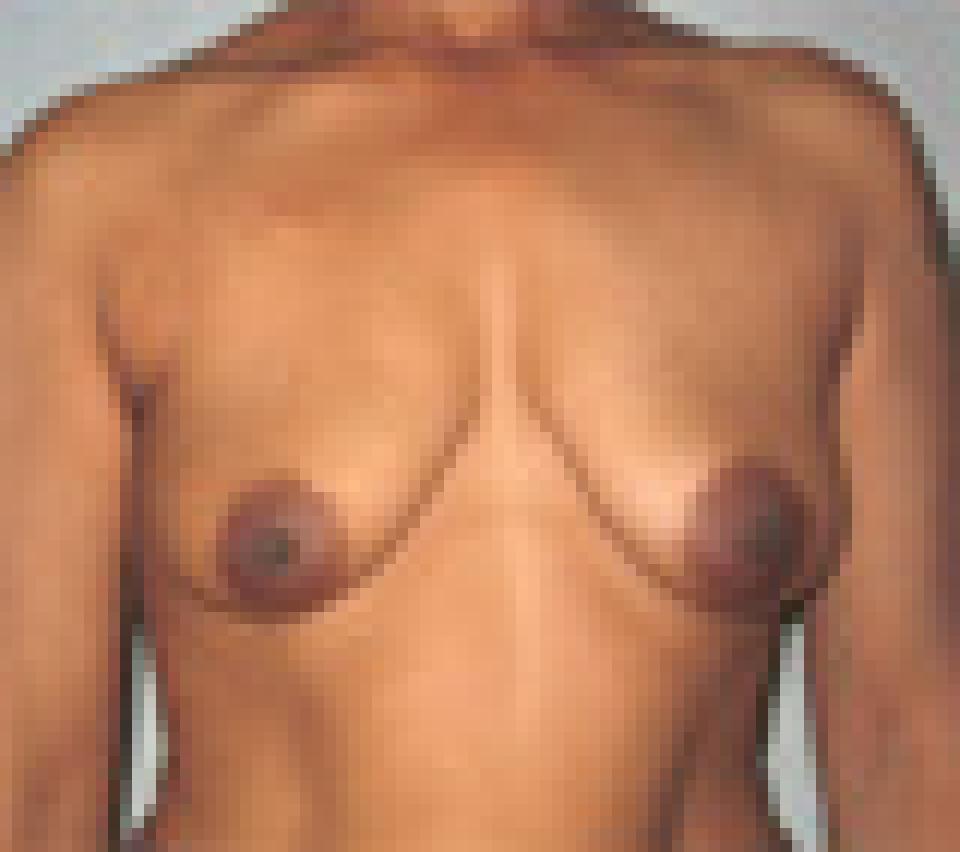 before
before
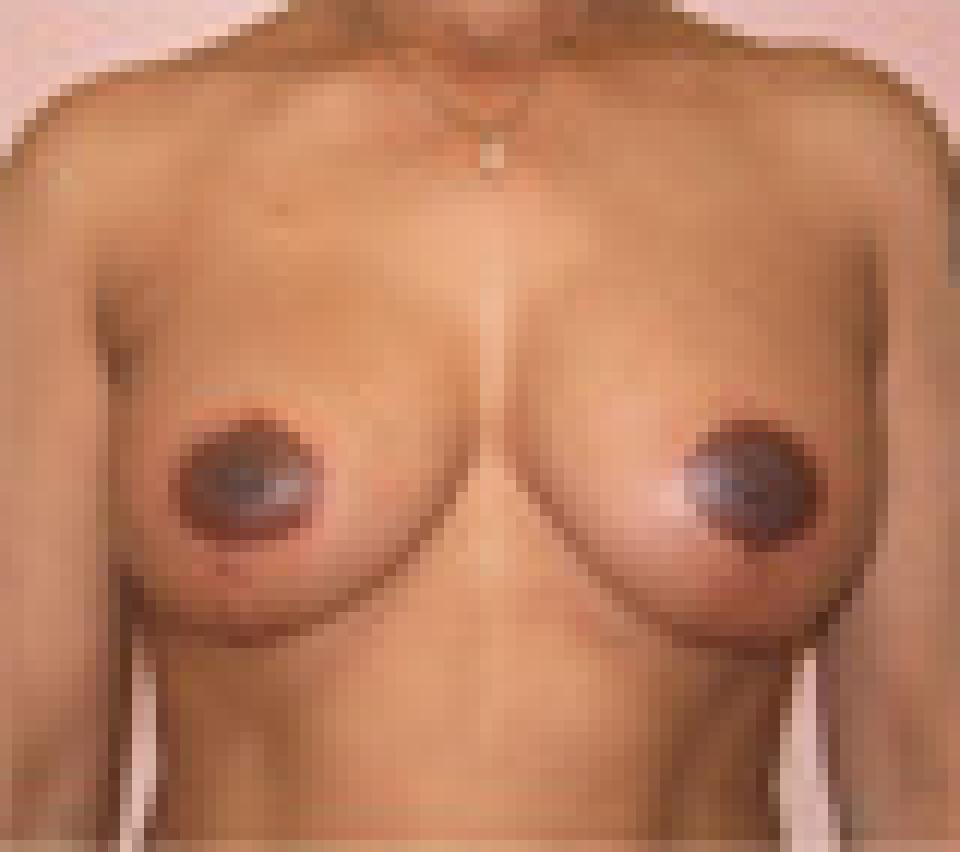 after
after
This case depicts a 47 year old woman who had borne two children and felt that her breasts had developed a sagging and deflated appearance.She underwent a vertical or "lollipop" incision breast lift along with placement of 300 cc smooth, round saline implants beneath the pectoralis muscles.
Her post-operative photographs depict her appearance approximately two months after surgery.This procedure also involves reduction of the areolas as needed in order to create a balanced and aesthetically attractive appearance. Asymmetries between the breasts can often be significantly improved as well.
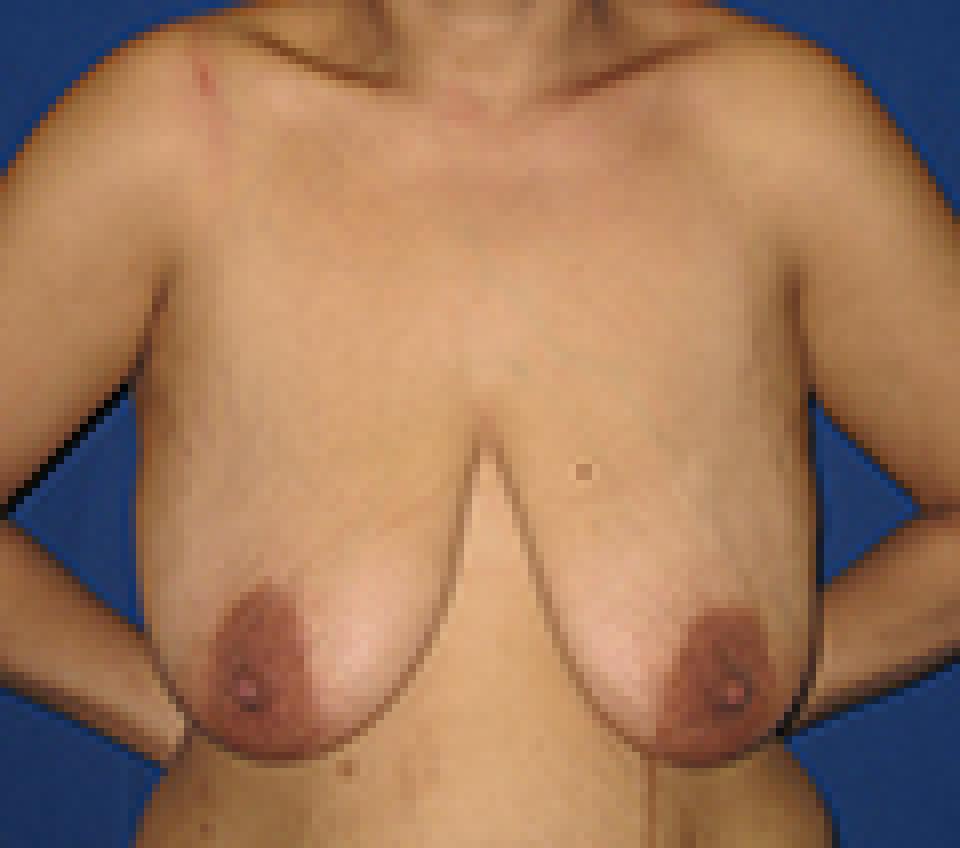 before
before
 after
after
This 26 year old woman reached her plateau weight after losing 74 pounds following bariatric surgery. She had a breast lift or mastopexy using a technique which leaves behind scars in the shape of an “anchor.”
In some patients who lose a large amount of weight, the natural end point of the breast laterally disappears and the breast appears to continue around towards the back. This is what has happened to this woman.
In selected individuals who have this problem, the “anchor” scar type breast lift can be amended to remove that skin excess on the side of the body beneath the arm. This is the reason that I selected that particular breast lift technique in this woman even though the scars that it leaves behind are longer and more difficult to conceal in a swimsuit.
Looking at her photographs after surgery, it is obvious that there is no longer a "wing" of skin that continues laterally towards the back. Instead, the breast has a round shape and ends as it typically does before the side of the body that lies beneath the arm.
Unfortunately, there is now a visible scar there. This is an example of what I refer to as a “trade off” in plastic surgery. It is important to decide what is more important to each individual patient- a scar or better contour. Sometimes, it is not possible to have both!
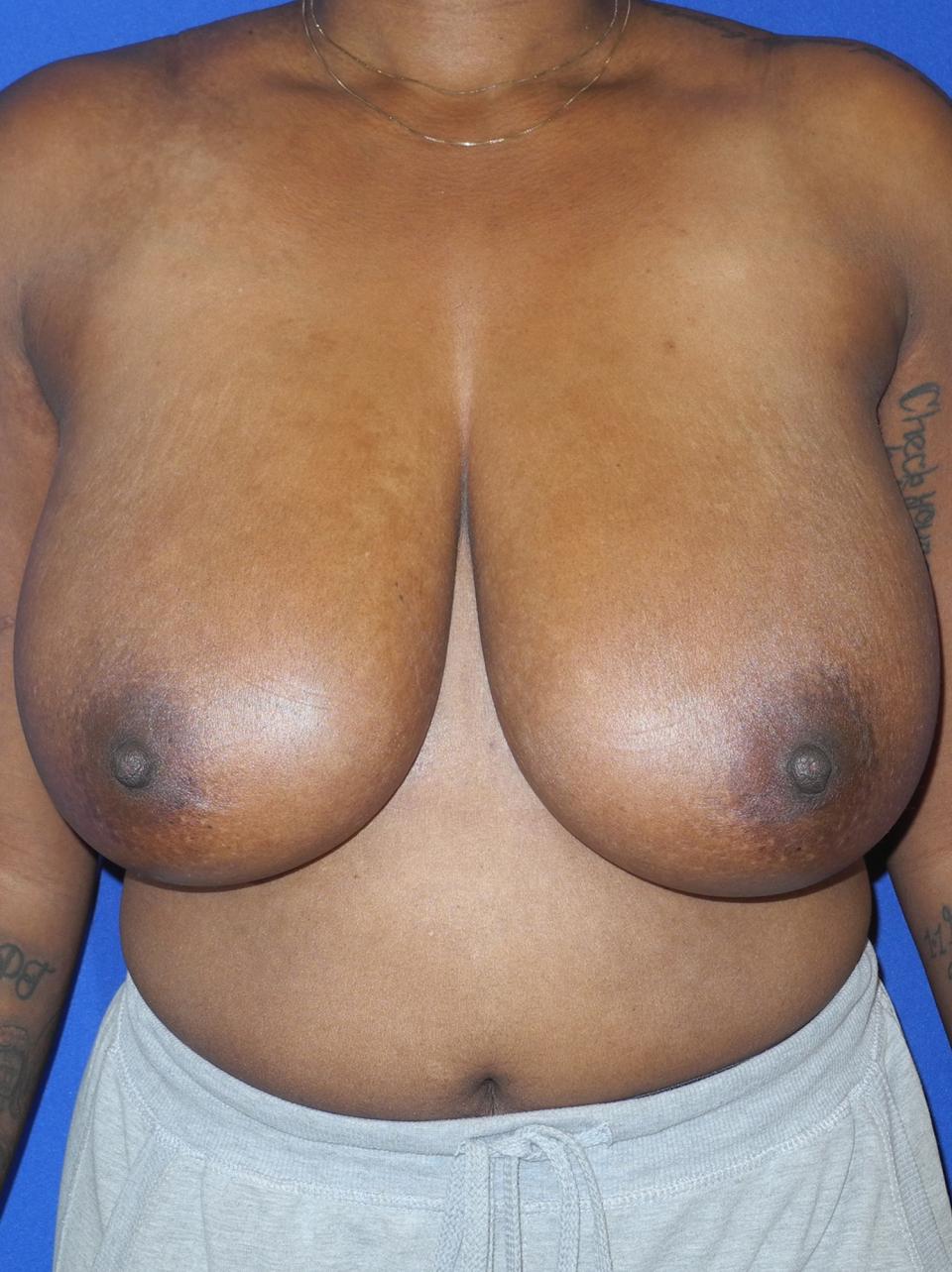 before
before
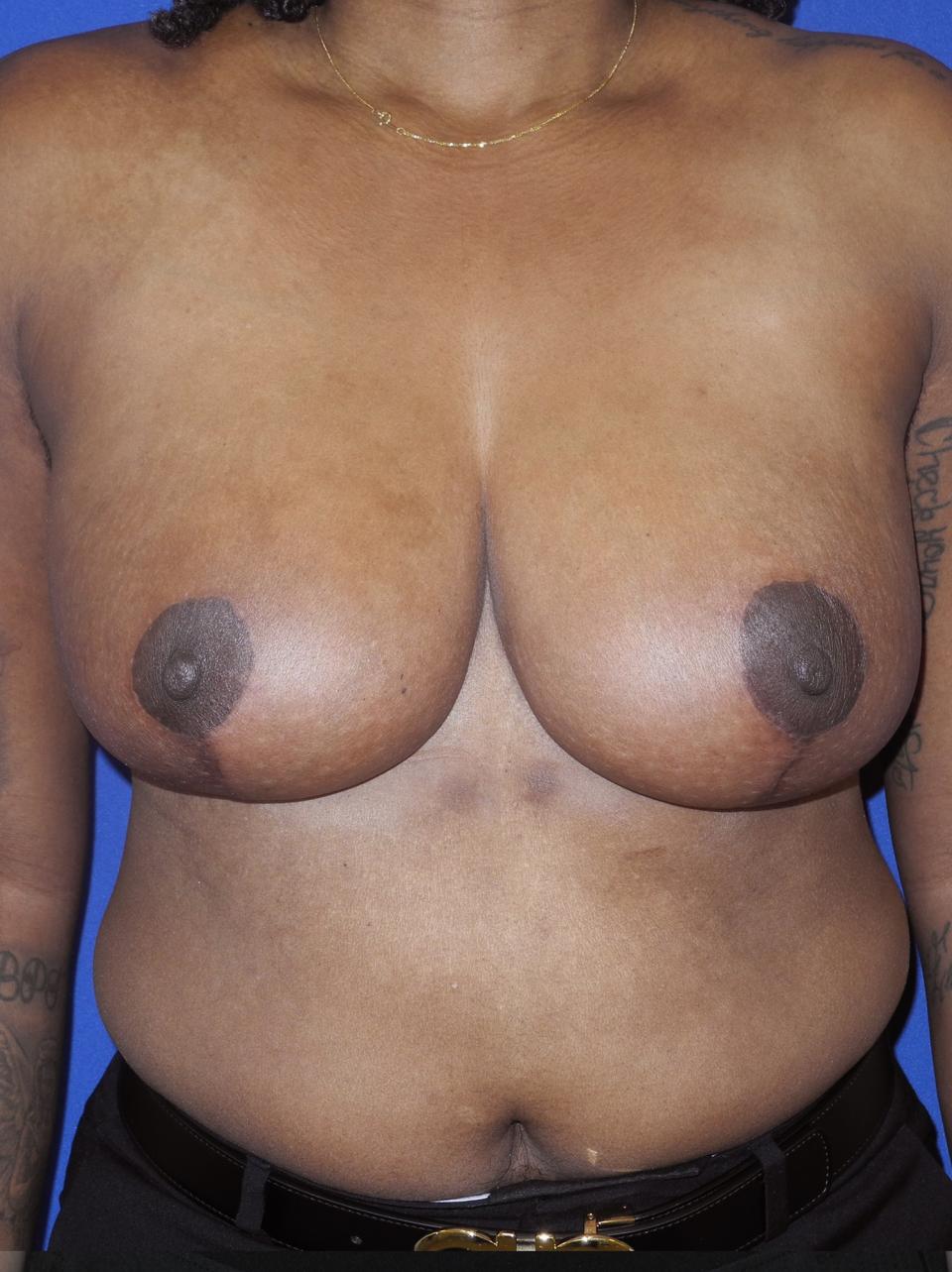 after
after
This individual suffered from gigantomastia and underwent a breast reduction in which almost three and a quarter pounds of weight was removed from the breasts.
The breast reduction was performed in a manner that so that the breasts were shortened in length and lifted. This photograph was taken at approximately four months following surgery. No liposuction was performed in this procedure.
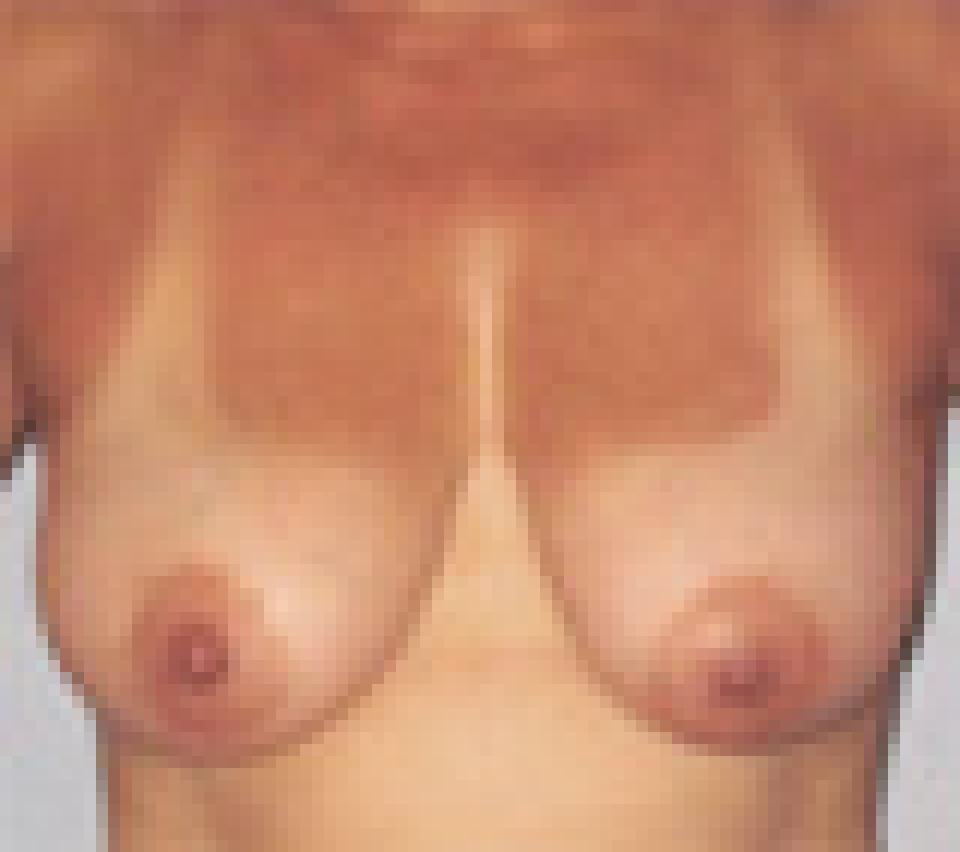 before
before
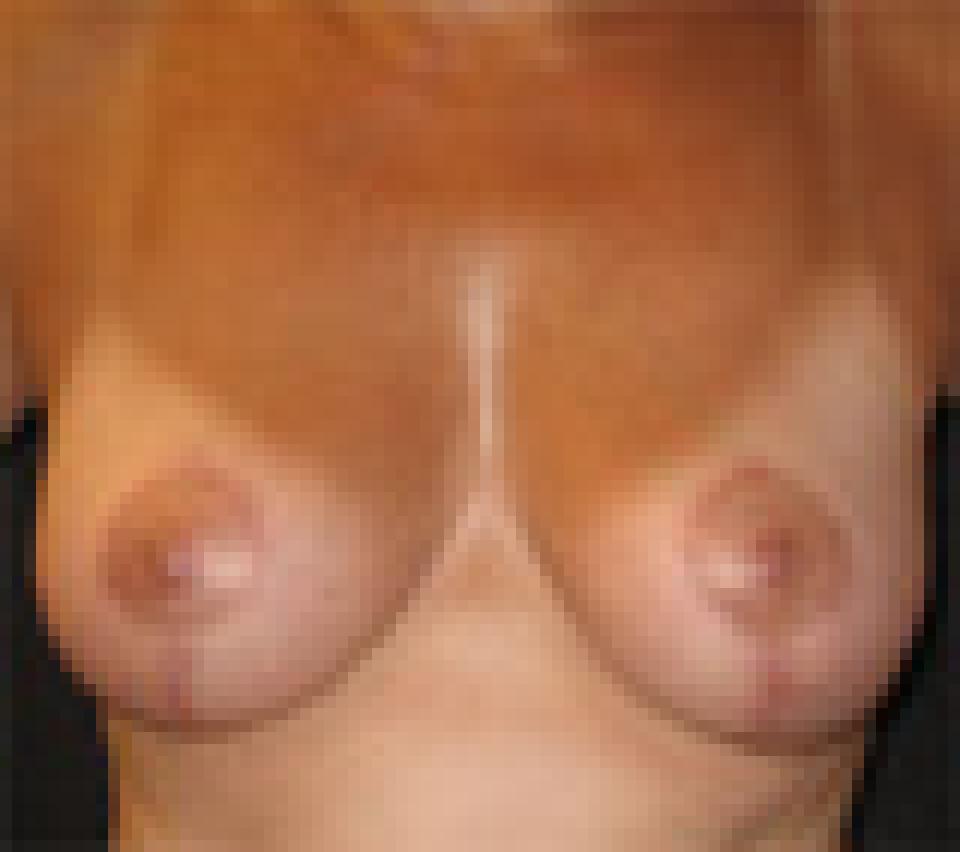 after
after
This case depicts a 52 year old woman who was happy with her breast size, but wished to have more shapely breasts. She underwent a short scar or "lollipop" incision breast lift. No implant was needed to achieve the breast size and shape she ultimately achieved.
The post-operative photographs depict her appearance at 9 months after surgery.
If a woman wished to have only a slightly larger bust size or slightly more fullness in the upper half of the breast, then a small implant may be added at the same time that the breast lift is performed.
 before
before
 after
after
This case depicts a 37 year old woman who had borne one child and had noted that her breasts had begun to sag and develop a deflated appearance.
She underwent a vertical or "lollipop" incision breast lift along with placement of 300 cc smooth, round saline implants beneath the pectoralis muscles. Her post-operative photographs depict her appearance approximately one year after surgery.
This case study also demonstrates how the nipple and areolar positions located too low and too close to the midline in this case, can be improved as part of the procedure.
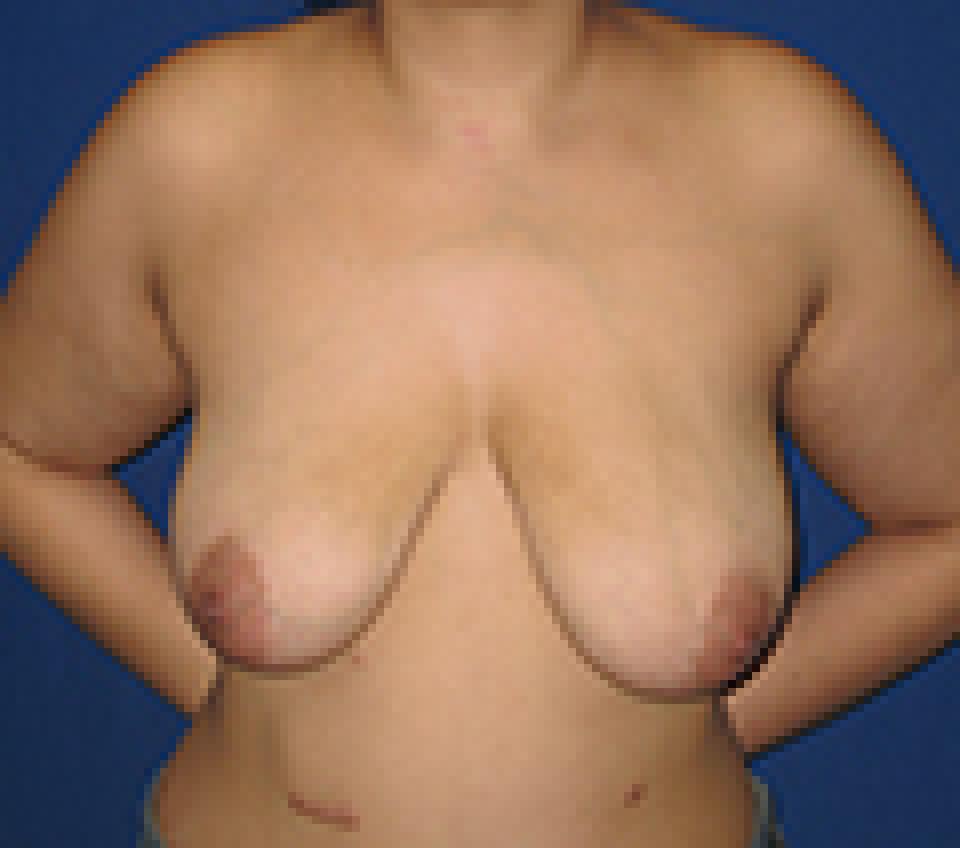 before
before
 after
after
This 35 year old woman reached her plateau weight after losing 56 pounds following bariatric surgery. She had breast lift or mastopexy using a short scar technique which leaves behind scars in the shape of a “lollipop.” Some breast lifts or mastopexies are performed using a technique that results in scars that look like an “anchor,” but I prefer to use this shorter scar technique because scars are never visible in the cleavage nor on the side of the body beneath the arm. This makes swimsuit selection much easier.
This woman has a history of poor scar healing. It is relatively easy to see dark and thickened scars on her abdomen from her bariatric procedure. I feel that it is especially advantageous to avoid the “anchor” shaped scar in individuals whose scars do not heal well.
When performing a breast lift or mastopexy, very little breast tissue is removed. Instead, the existing breast tissue is rearranged so that the new breast shape is typically shorter and rounder than it was previously.
Performing a breast lift in an individual who has lost a great deal of weight is often very challenging. They tend to have an extreme amount of skin excess and relatively little breast tissue. As such, a great deal of skin must be removed while significant effort is made to preserve every bit of breast tissue possible to achieve a natural looking breast.
Dr. Belsley's Philosophy of Breast Augmentation
When it comes to deciding what approximate breast size you wish to achieve, the best advice I can give you is that you should be guided by your physical frame. Indeed, you may in fact be limited by it. In my practice, I select implants based upon your chest measurements, the quality of your breast skin and the size of your breasts prior to surgery.
I perform breast augmentation through a peri-areolar or inframammary approach and I place that vast majority of implants at least partially beneath the pectoralis muscle. My patients are welcome to select either saline or silicone filled breast implants. Silicone filled implants can in some cases achieve a more natural feel and may be a particularly attractive option for women with less breast tissue prior to surgery.
More >>Breast Reduction Ideals
Once I have removed enough tissue to achieve an appropriate breast size, the nipple and areola are repositioned, which means that the new, smaller breast also has a “lifted” appearance. While this is not the primary goal of this procedure, it is a fantastic secondary benefit of it. I strive to achieve the same aesthetic standards when I perform medically necessary breast reduction as I do for cosmetic breast lift or mastopexy. Since stretching of the areola is a common problem in patients with very large breasts, I typically reduce the size of the areola during breast reduction.
More >>Dr. Belsley's Philosophy of Breast Lift (Mastopexy)
In my practice, I perform breast lifts using incisions that result in a “lollipop” shaped scars. With good care and a bit of luck, these incisions heal well and the scars are difficult to see from a distance. Nevertheless, a woman who undergoes a cosmetic breast lift must be prepared for scars that are visible. This is one example of a “trade-off” in plastic surgery and of course, there are many others. This is one, however, that I feel is more than worthwhile in appropriate candidates.
More >>Revisional breast surgery implies a repeat operation
The surgical use of the word “revision” implies more than repeat; it means going back to the site of a previous operation and performing another one, similar perhaps but not necessarily the same. The reasons are multiple – there may have been an anticipated or unanticipated complication, the patient may not be satisfied with a cosmetic result although there is no other issue, the procedure may need to be repeated because the implant has become worn or damaged (not only breasts, applies to pacemakers and eye lens implants).
In terms of revision of breast surgery, the patient may be dissatisfied with a poor result, or perfectly satisfied but now wants the breasts made larger or smaller; something may have happened to the prosthesis and it needs to be replaced; the prosthesis may not have changed but the patient wants a different type (switch from saline to gel); there may have been post-augmentation changes due to pregnancy, weight gain or loss, or advancing age.